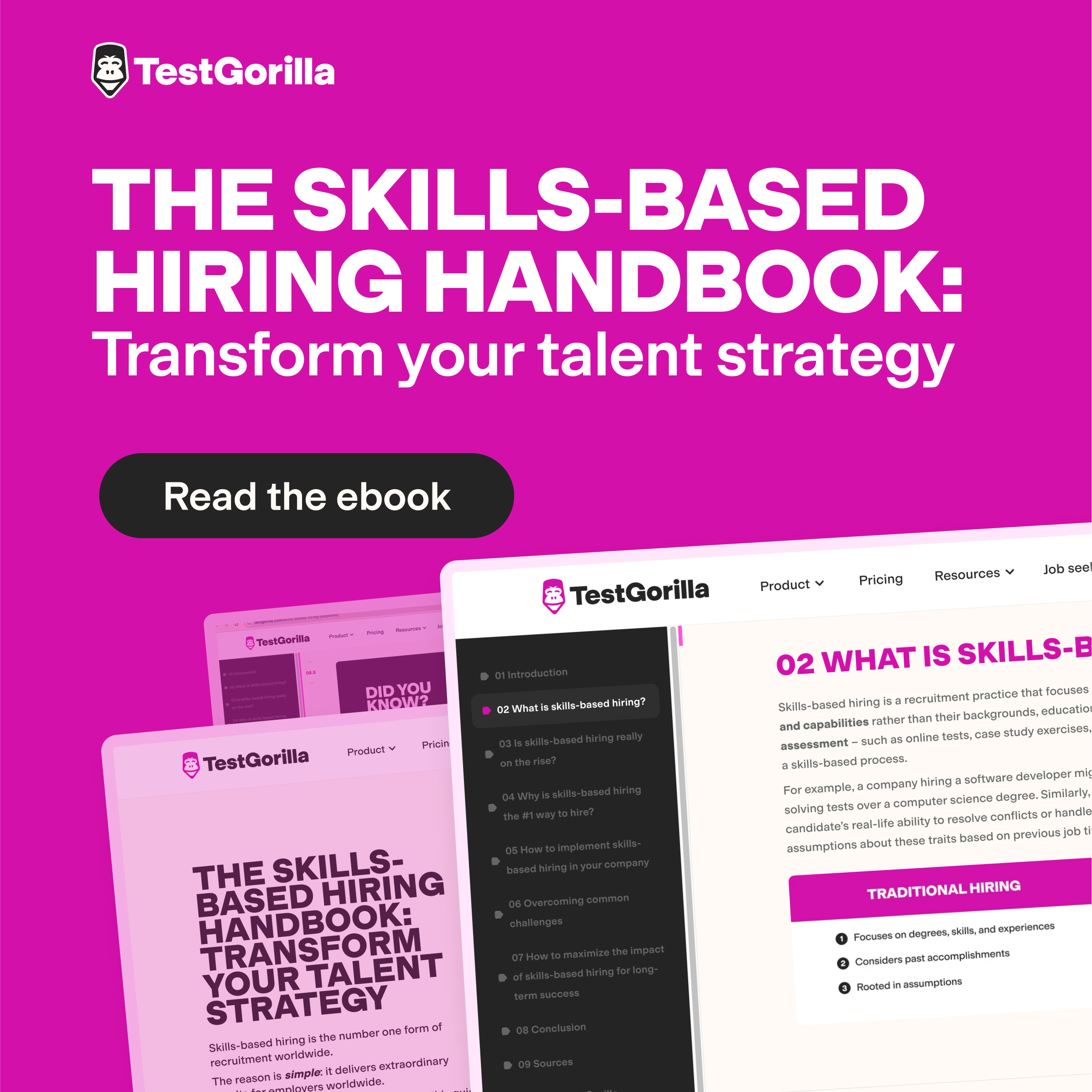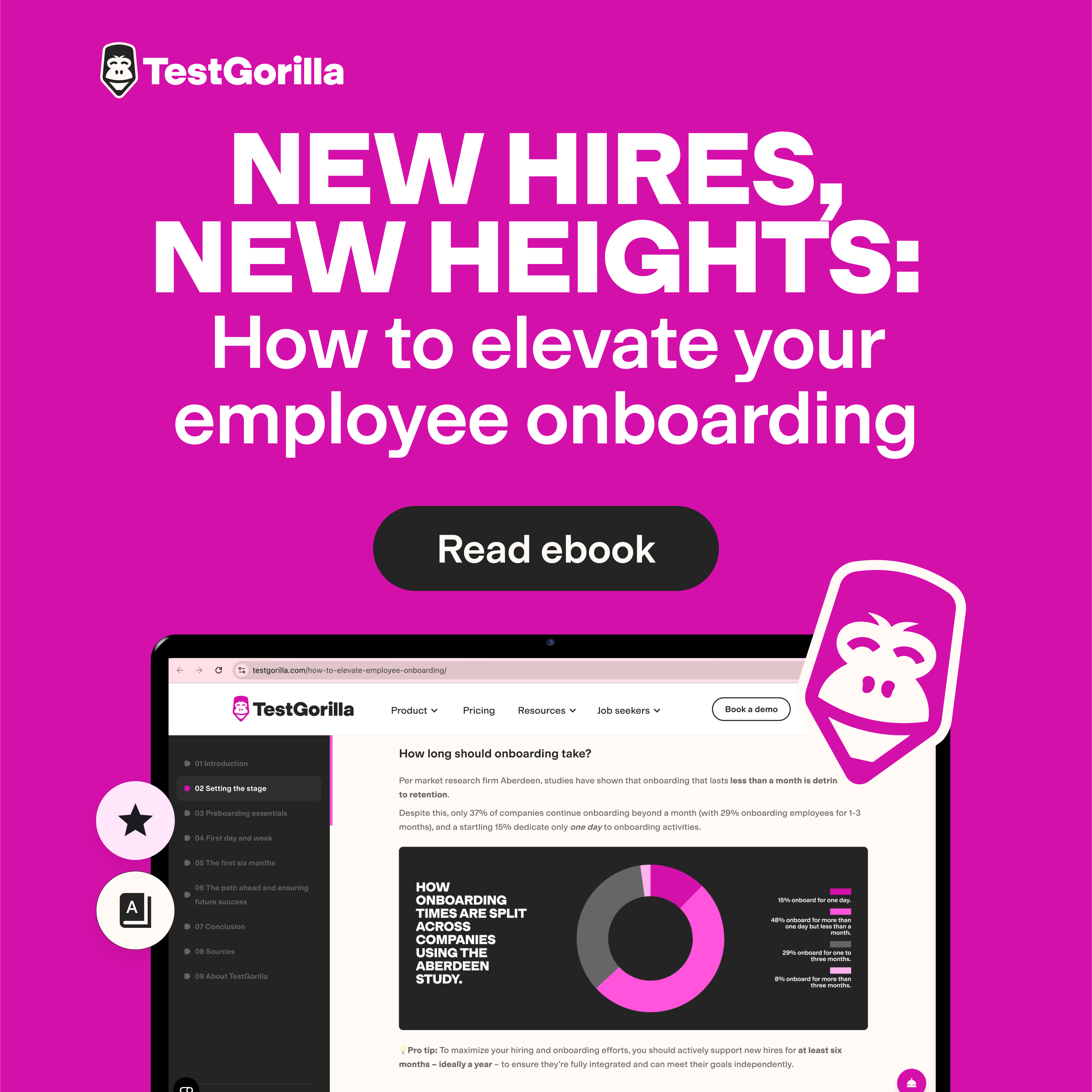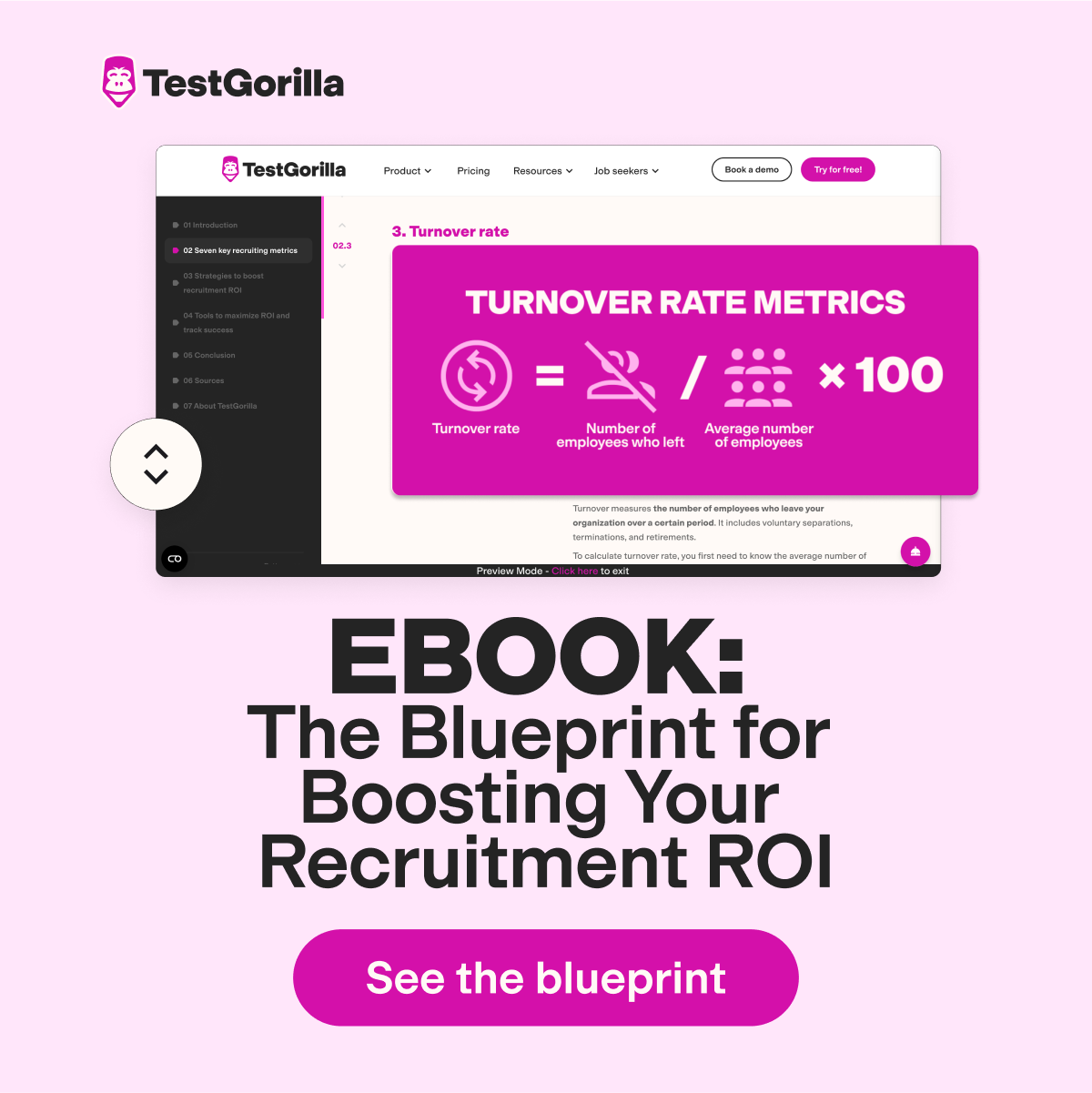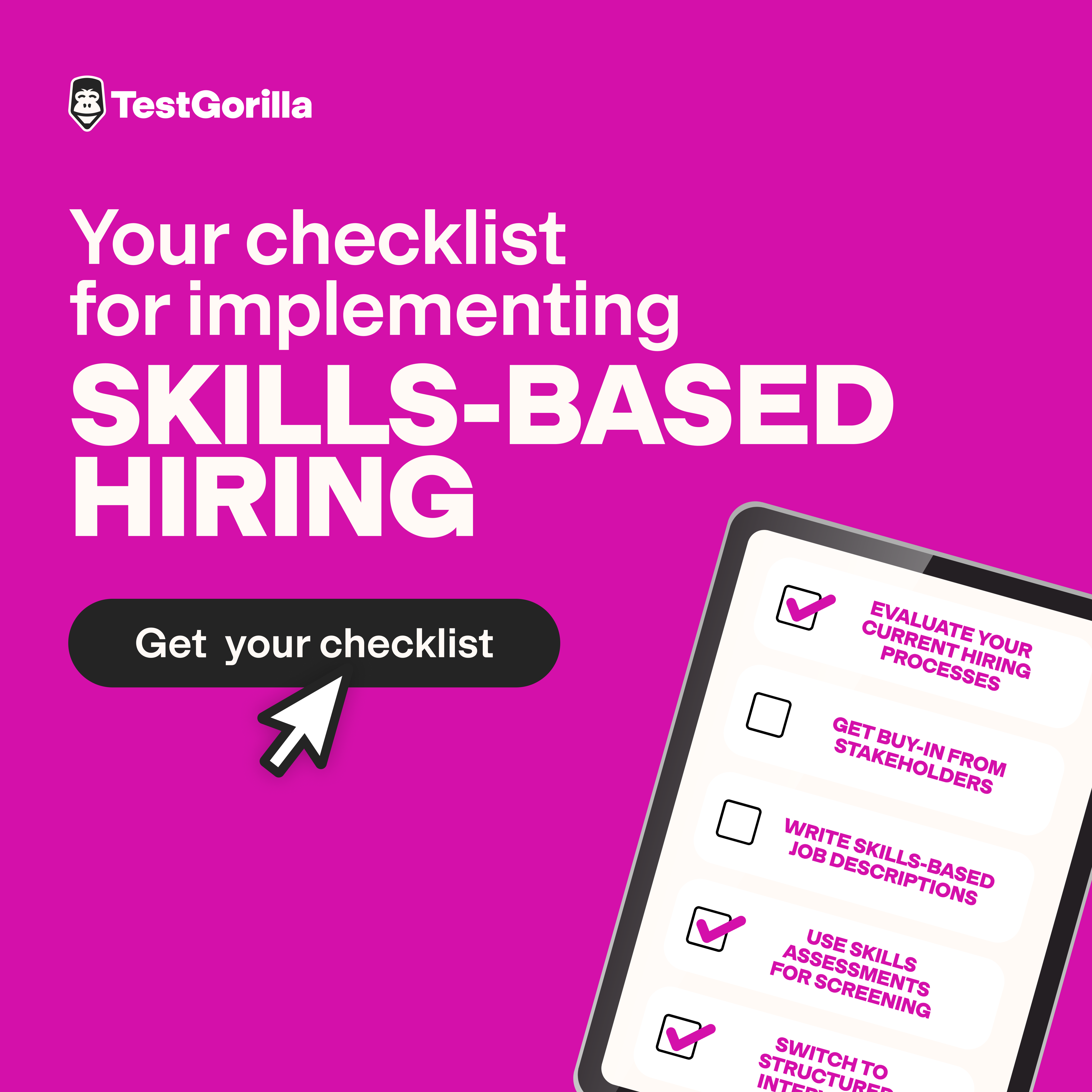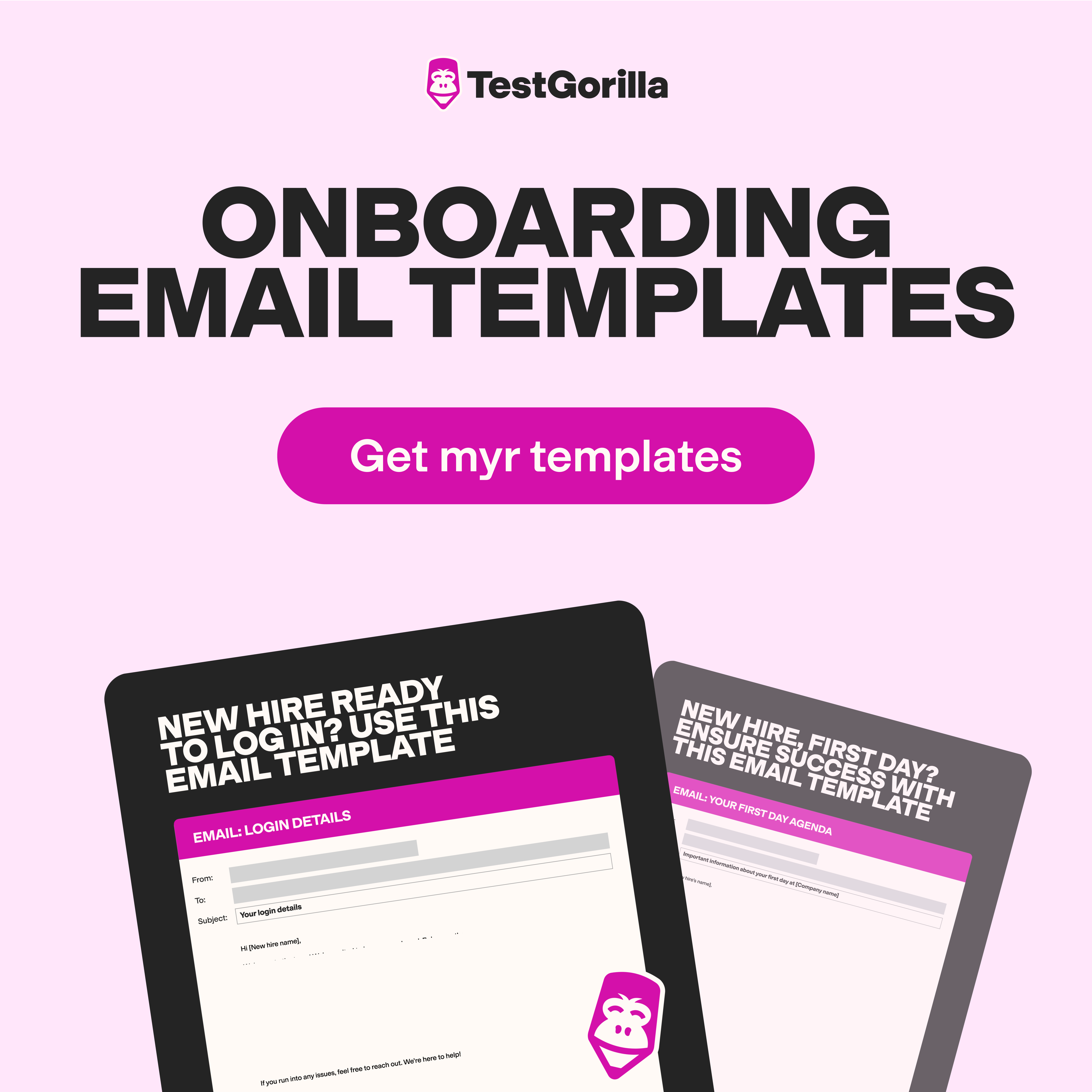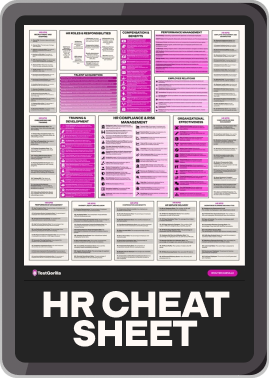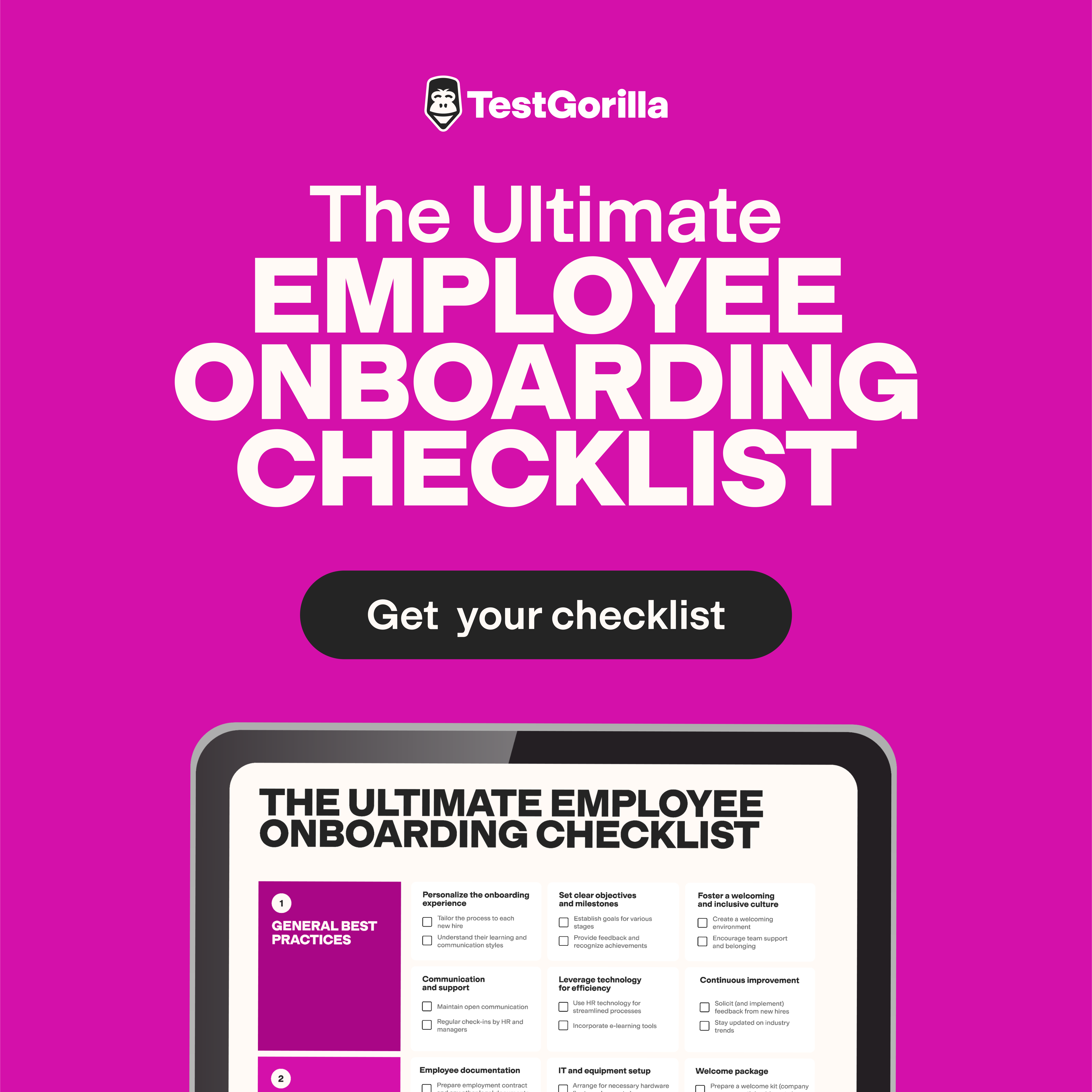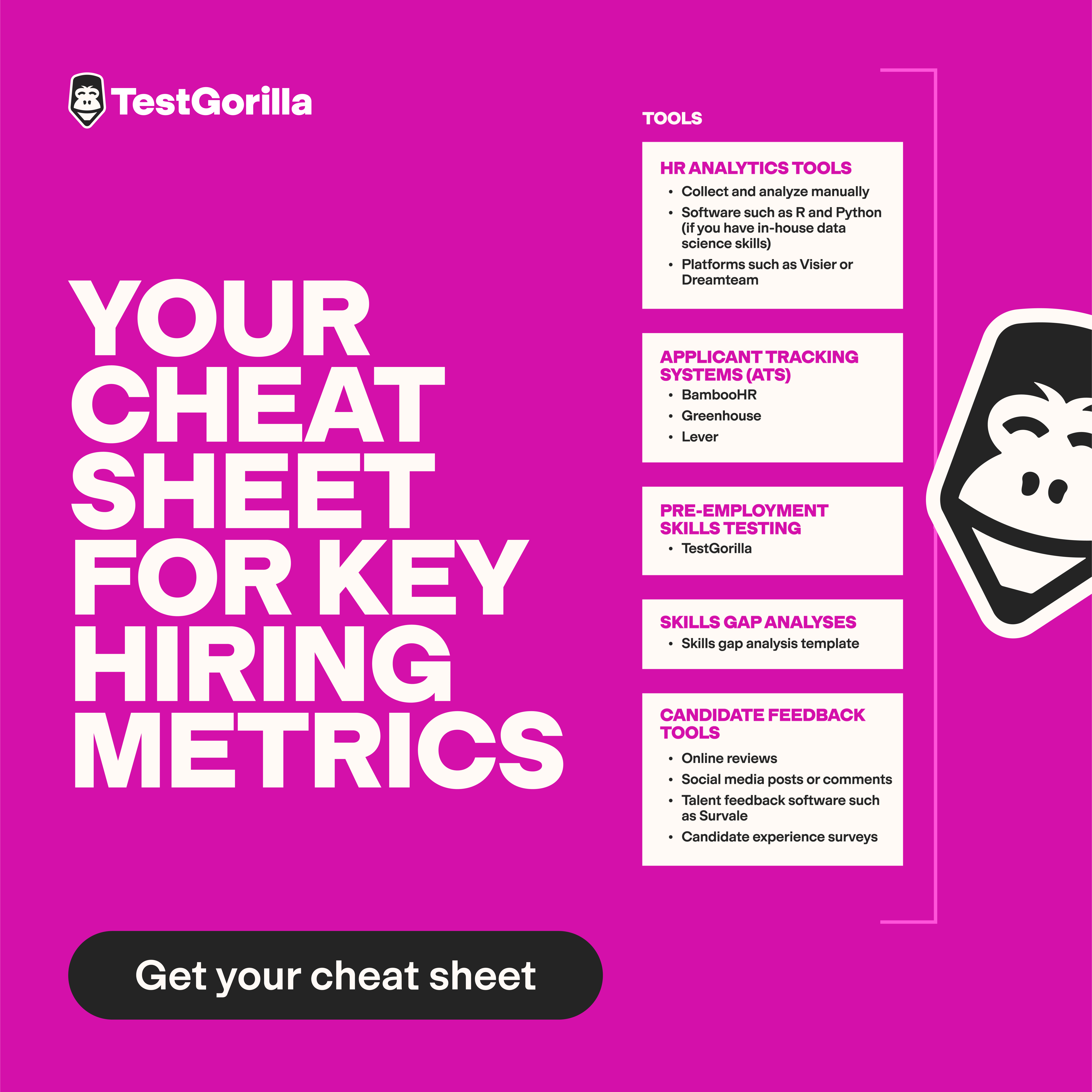The way we hire has changed so much over recent decades. Job applications are entirely digitized, companies are using AI resume scanners, and applicant tracking systems have turned candidate management on its head.
But this isn’t the end: Change is expected to continue and perhaps accelerate.
How can you invest in the right technologies, plan effective hiring strategies, and beat the competition? We can help.
Below, we share eight ways that applying for jobs will change between now and 2050 so you can forge ahead and secure the best talent for your team.
8 ways applying for jobs will change in 2050
Tech, AI, and automation have already changed the way we hire. Much of the application screening process is now AI-driven, and candidate communications are almost completely automated using applicant tracking systems (ATSs) and AI chatbots.
Tech and AI will continue to grow over the next few decades. Additionally, the economy and job landscapes are constantly evolving, while most of the 2050 workforce will be Gen Z and Gen Alpha.
Let's look at what these changes will mean for the future of job applications.
1. Job descriptions will be short, concise, and mobile-optimized
Research shows that the average human attention span has shrunk significantly over the years. In a recent podcast published by the American Psychological Association (APA), Dr. Gloria Mark, a professor of informatics, shared that the average attention span on screens has gone down from 75 seconds in 2012 to about 47 seconds today.
This trend is largely due to the mobile revolution and is expected to continue. People consume large amounts of information daily and must divide their attention across multiple sources.
Another study examined 249 schoolchildren to assess their use of digital devices and found that 145 children were between seven and ten years old when they started to use digital devices, and most of them preferred using their smartphones. These children will make up most of the workforce over the next few decades.
What employers can do
As we look ahead to 2050, you must account for dwindling attention spans and the growing use of mobile phones when writing job descriptions. Otherwise, you could lose out on top candidates who won’t devote attention or have time to spend on long and detailed role descriptions.
Here’s how:
Streamline content: Reduce the length of job descriptions and focus solely on duties and top skills needed for the job to accommodate shorter attention spans.
TL;DR: Alternatively, use a TL;DR (“too long; didn’t read”) snippet at the top of your job description that sums up key details for those who need it.
Visual elements: Incorporate visuals and infographics, and use bullet lists and bold formatting in key places, to make job descriptions quicker to scan and easier to understand.
Mobile-first: Ensure job descriptions are optimized for smartphones, with responsive design that adapts to varying screen sizes and provides a smooth user experience.
2. Pay transparency will become even more important
We spoke to HR and hiring expert Yashna Wahal about how pay transparency is changing. Here’s what Wahal shared.
"Employers have traditionally been secretive and opaque about compensation. Job candidates often don’t learn about a role’s salary until the offer stages. And, if they ask, recruiters have plenty of creative ways to deflect – for instance, by finding out the candidate's current salary first and using that as a starting point to define what the role is worth.
“Today, things are starting to look very different. With a push for gender equity and fair pay practices, several places, such as New York and California, have already enacted laws requiring employers to post salary ranges in job descriptions, and more are expected to follow.”
As we look toward 2050, pay transparency will become inherent to job descriptions, regardless of whether it relates to a new position or internal mobility. In addition to legal mandates, this will also be driven by candidate expectations.
Adobe's New Future Workforce Study found that 85% of Gen Zers are less likely to apply for a job if the company doesn't disclose salary information in the job posting. With Gen Z expected to make up a large part of 2050’s labor force, employers must oblige.
What employers can do
Here’s how to get ahead of this:
Educate yourself on local laws to ensure compliance with state and local pay transparency laws to avoid getting into legal hot water.
Avoid unwanted surprises by setting fair salaries based on factors like job responsibilities, skills, and market data. This way, you have nothing to hide and can prevent reputational damage that companies like Google have faced when their pay inequity issues were suddenly made public.
If you can’t pay at market levels, highlight other employee benefits and opportunities you can provide candidates with.
Be transparent with both new jobs and existing roles. This can boost internal satisfaction and retention levels.
3. Job seekers will be able to apply for roles in multiple ways
We’ve already evidenced the increased use of smartphones and dwindling attention spans. If your hiring process requires a laptop, multiple logins, tailored resumes that take ages to craft, or lengthy application forms, you’ll probably lose the next generation of candidates before they even apply.
According to a study mentioned by the Society of Human Resources Management (SHRM), you can currently boost application rates by 365% by reducing the length of the application process to five minutes or less.
What employers can do
As you steer toward 2050, think about how you can improve application rates by providing quick and efficient application submission processes and flexibility in how candidates can showcase their skills.
Here are some methods to consider adopting over time to reduce the barrier to entry for top candidates:
Video introductions | 1-click apply | Online tests |
Let candidates apply by submitting a video explaining their backgrounds, relevant skills, and interest in a position. | Instead of asking applicants to draft long and customized resumes, allow them to submit their profiles through LinkedIn, job boards, or their personal websites using single-click apply or a link to their portfolio. | If you’re worried about being able to vet candidate profiles, consider putting applicants through quick online skills assessments. Candidates can showcase their skills without filling out long forms or writing resumes, and you get objective data to make better screening decisions. |
Pro tip: Consider one-way video interviews where you ask candidates to answer specific questions, which they can answer on their own time, from anywhere. | Pro tip: Use AI assistance to summarize job suitability from any of these sources, which is similar to how companies use AI to summarize resumes. | Pro tip: Use these assessments as an initial screening tool. |
4. AI tools could offer career counseling and job-matching
With the growing prevalence of AI, many candidates have already turned to generative AI and other tools to write resumes that include the same keywords as their dream job description so they can get picked up by employers’ ATSs.
According to HR and hiring expert Yashna Wahal, candidates’ use of AI will evolve even more in the future. “In the approach to 2050, the role of AI will transform from simply matching resumes to job descriptions to acting as a personalized career counselor for candidates. In the future, AI could analyze a broader spectrum of candidate data – including their skills, work histories, interests, aspirations, and online activities – to suggest jobs that candidates might not have even considered but are well-suited for.”
What employers can do
As AI becomes more integrated into the career planning process, future employers will need to adapt their hiring strategies.
Instead of simply dictating the duties of a role, incorporate the specific skills, personality traits, values, and interests you're looking for from ideal candidates, boosting your chance of getting picked up in the right candidates’ AI searches.
Additionally, regularly update job postings to signal that the position is still open. This can help you maintain high visibility in AI-driven searches, as AI systems often favor the latest and most relevant content.
Finally, stay informed about advances in AI and how you can leverage tools to match with the best candidates out there.
5. Skills-based hiring will dominate
Research shows that today, fewer people are enrolling in college. A Forbes article highlighted that Gen Z is losing faith in college degrees, whereas CNBC reported that about 50% of Americans believe they don’t need college to get high-paying jobs.
The push for social mobility, diversity, and inclusion has also encouraged employers and government organizations to reconsider the need for college degrees in job applications.
The New York Times recently pointed out that the current emphasis on college degrees is “profoundly unfair,” as it serves the needs of only the “well-connected elites.” Another study showed that only 34% of Black Americans have associate degrees, compared with 50% of White Americans.
What employers can do
As more of the next generation ditch degrees and choose to learn through alternative routes, the case for skills-based hiring will be stronger than ever.
You should prioritize candidates’ real-world skills over credentials when recruiting and selecting employees. Opt for online talent assessments, practical tasks, and other skills assessments rather than looking for degree and college names on resumes.
Many employers are already doing this.
Our most recent State of Skills Based Hiring report showed that of over 1,000 employers, 81% of today’s employers use skills-based hiring (up from 73% in 2023 and 56% in 2022). Ninety-four percent even agree that skills-based hiring is more predictive of on-the-job success than resumes.
Interestingly, 84% of 1,000+ job candidates also preferred skills-based hiring methods as a way to reduce hiring biases.
6. Soft skills and cognitive abilities will become pivotal to candidate selection
The World Economic Forum’s Future of Jobs report predicts that ongoing tech advancements, changing market dynamics, and shifting work landscapes and job requirements will disrupt 44% of technical skills over the next few years. So, imagine how irrelevant today’s technical skills will be in 2050 and how quickly things will continue to evolve.
As such, the emphasis on candidate selection is expected to shift significantly toward human skills (a.k.a. “soft skills”), cognitive abilities, and behavioral attributes. These include good communication, negotiation, problem-solving, analytical thinking, digital literacy, and critical thinking.
Further, with change as the only constant, employers will look for candidates who have traits like adaptability, resilience, and a willingness to learn.
Additionally, we at TestGorilla believe remote work is expected to rise exponentially over time. Employers will also look to identify candidates who've got what it takes to work remotely or flexibly. They may look for traits like high motivation, consciousness, and cultural competence as more companies employ remote global teams.
What employers can do
Focus on spotting candidates who truly excel in these areas. You can do this by using assessments that provide you with objective and reliable metrics on your candidates’ strengths and development areas.
Plus, the right behavioral interview questions will help you assess how candidates have applied their skills in various situations.
7. VR and the metaverse could change the remote interviewing game
The post-pandemic world has seen a substantial transition towards more remote work, with a significant increase in remote and hybrid roles.
Despite some employers issuing return-to-work mandates, the remote work trend is here to stay. According to a new white paper released by the World Economic Forum, remote digital jobs are estimated to grow by 25% to over 90 million roles by 2030.
With the rise in remote and hybrid work comes an increase in remote interviewing. According to a recent survey, 82% of employers use virtual interviews, and 93% plan on continuing.
While remote interviews are more cost-effective and efficient, many employers struggle with assessing candidates’ body language, evaluating skills effectively, and handling technical glitches that can negatively impact interactions during interviews.
As remote work is expected to grow as we head toward 2050, companies must innovate their remote interviewing techniques. VR (virtual reality) and the metaverse will likely be the key to resolving some of the challenges.
VR is a technology that creates immersive virtual environments where users can interact with a completely digital environment. It’s already been successful in education, gaming, and other areas, and we’re already seeing its use case in recruitment.
One study found that VR job interviews had high rates of acceptance, low hesitation from first-time users, and reduced biases toward job candidates.
The metaverse takes VR to the next level. It’s a collective virtual shared space that supports a wide range of activities and social interactions similar to the real world. Research by Microsoft showed that over half of Gen Z envision using the metaverse for work in the coming years.
What employers can do
First, stay up-to-date with emerging VR and metaverse technologies for hiring. Additionally, train and prepare your hiring and HR team to use VR technology effectively, including handling VR equipment and managing virtual interactions.
Update your interview guidelines – such as how to conduct effective VR interviews and assess candidates fairly and effectively. Finally, ensure your chosen VR technologies are inclusive and accessible to all candidates, including those with disabilities or impairments.
8. AI and ML will help with predictive hiring
AI and machine learning (ML) have quickly found several use cases in recruiting. Today, 70% of employers use AI in talent acquisition in some shape or form, whether it’s for candidate matching, communications, or interview analysis.
Research published in the Harvard Journal of Law and Technology found that simple algorithms outperform human hiring decisions by at least 25%, including in frontline jobs, middle management, and the C-suite.
Looking ahead to 2050, AI and ML engineers will continue to refine and improve these technologies and eventually mitigate some of the current challenges, such as candidate hesitation and the perpetuation of biases.
We expect advanced AI and ML to play a pivotal role in predictive hiring – helping employers decide how, when, and who to hire.
AI and ML will also play a key role in candidate discovery and rediscovery. For instance, these tools will be able to scan existing candidate databases of previous unsuccessful candidates, plus those who attended company events and fairs, signed up to your careers website, and more – and predict which candidates could be successful in your open roles based on their profiles.
In a conversation with SHRM, Kara Yarnot, VP of strategic consulting services at HireClix, mentioned that these advanced tools can “immediately generate a list of qualified candidates before a position is posted” and “will save an organization significant recruitment marketing budget.”
What employers can do
Get ahead of this trend by:
Integrate AI and ML tools with your existing HR systems or move over to HR systems that already use these technologies. This way, you can get ahead now instead of rushing to migrate systems in the future. Plus, you can collect data for decades, which can give you very rich insights.
Train your HR and recruiting teams on how to use and understand AI and ML tools and accurately interpret outputs. Also, hire tech-savvy recruiters today to ensure they’re equipped when the time comes.
Establish a clear data governance policy to ensure compliance, and check that your systems are using data effectively and ethically.
Regularly review AI and ML predictive outputs to ensure they’re free from bias.
Take the lead with skills-based hiring and more
The rise of AI and ML, shift in market dynamics, and evolution of employee priorities are expected to continue into the next few decades, leaving us wondering how applying for jobs will change by 2050.
Based on extensive research, we predict that 2050 candidates will look for shorter job descriptions, transparent pay data, quicker ways to apply for roles, and AI-driven career guidance.
Employers will fully embrace a skills-based hiring approach, prioritize human skills in candidate selections, and use AI, ML, and VR tools to boost their recruitment efforts. Get ahead of these trends now to be prepared for what the future brings.
The best insights on HR and recruitment, delivered to your inbox.
Biweekly updates. No spam. Unsubscribe any time.
Related posts
You've scrolled this far
Why not try TestGorilla for free, and see what happens when you put skills first.








